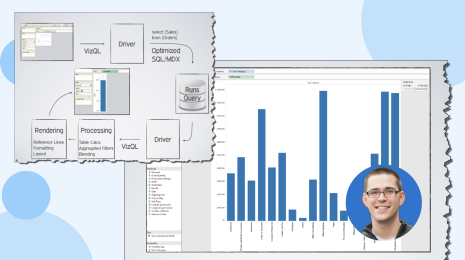How to make the Federal Data Strategy succeed
This article was originally posted on FCW.
The Office of Management and Budget just released a draft, one-year action plan for a comprehensive federal governmentwide directive on data–how it should be gathered, stored and used to inform decisions, serve the public and become a part of agencies' strategic plans. The Federal Data Strategy, part of the President's Management Agenda, is designed to help all agencies leverage data as a strategic asset.
Despite agreement as to the importance of data, public (and private-sector) organizations tend to struggle with implementing enterprise wide data strategies and processes. The Federal Data Strategy helps address those challenges by giving agency leaders a clear vision and set of goals and objectives, such as establishing data governance, improving decision-making and accountability, defining access and use policies and making data useful to external audiences.
While all the data strategy's proposed actions will drive positive change, the essential element of these plans is to expose data to the curiosity of agencies' entire workforces and enable them to gain speed to insight. For instance, Action 14 of the plan points out:
"Data-driven decision-making requires not only accessible, high-quality data but also a workforce with adequate knowledge of data security practices and data skills, including data science, statistics, and program evaluation, to leverage insights from data while also safeguarding protected information. In an increasingly complex and data-saturated decision landscape, even staff who traditionally have not employed data in their day-to-day functioning will be better able to meet critical business needs by attaining at least basic data literacy skills."
As someone who worked in government for many years trying to find better ways to provide timely, accurate and relevant data, knowledge and insights to senior military and civilian decision-makers, my concern is not as much about the details of the action plan– the cross-government team is off to a great start with its recommendations–but rather how federal agencies and leaders carry the mantle to create a culture that institutionalizes the plan.
From policy to practice
So how can agencies make the action plan stick? Traditional approaches of building new organizational structures or entrusting the mission solely to IT specialists won't create a data-driven culture. There are many past examples where these approaches lost steam and failed to meet desired outcomes. A command-directed approach will, at best, only yield compliance. It won't positively affect culture. Change comes from inspiration that influences the norms and values of the organization. That requires leadership at every level and in every functional area across the federal government. A chief data officer can certainly help drive strategy and execution. However, a vision where every employee is empowered by data requires leaders at all levels helping to create an environment where the right business and mission processes and business analytic tools become the centerpiece of decisions.
This isn't about IT deployment, but rather self-service capabilities that can be easily learned and used by any employee at any level. Creating the right environment to empower data-driven decisions is best achieved by a clear set of agency goals and measures that drive the right behaviors. No one person can make that happen. It's a collective effort and commitment of every part of every organization driving a common set of outcomes.
Too often success is measured through PowerPoint updates that track software and hardware deployments, adoption of tools, etc. While some form of this can't be avoided, over-reliance on this approach often results in chasing the wrong metric, which in turn leads to underwhelming results or an outright failure to meet desired objectives. While mapping and measuring the quality of decisions to overall strategy and desired mission outcomes is a more challenging approach, it is much more relevant to achieving desired outcomes. I cannot think of an agency or mission function where this approach did not yield significantly better results.
As a former military IT professional, I know that many of our past challenges have been addressed by increasing capacity. We pressed for more people, bandwidth, storage or compute power to solve many of our challenges. Unfortunately, the current challenges in the areas of large and distributed datasets are more about complexity. The paradox we now face is that capacity cannot solve an issue of complexity. Solving for complexity in this area requires a comprehensive approach that is best addressed by instilling new processes that fundamentally change the culture. That challenge fires me up, in part, because the consequences of failing scare me more.
We stand in the arena facing an opportunity to solve a vexing challenge facing our nation. Embracing the Federal Data Strategy action plan is imperative. Our data challenges will not diminish in scope by studying and debating more and more. In fact, failure to adopt this data-first approach will only make us less secure and competitive as a nation.
I'm bullish that government leaders recognize this opportunity and are taking big steps to seize the moment. As agencies move to the cloud (most following the Cloud Smart Strategy), and begin leveraging machine learning and artificial intelligence, a bell has sounded. The time is now for agencies to adopt strategies that empower their workforces to embrace a data-driven culture, gain more insights, make better decisions and achieve better outcomes. Anything less will be a lost opportunity.









